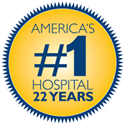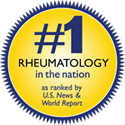The approach to managing dry eye in Sjögren’s disease is determined by its severity.
All affected individuals should avoid or limit medications that reduce tear flow (e.g. antihistamines and certain tranquilizers and anti-depressants), smoking, exposure to windy or very dry environments, and activities that require prolonged visual attention (e.g. video gaming, reading).
For mild dry eye disease, the use of preserved artificial tears up to 4 times per day may suffice.
For more severe disease, preservative-free artificial tears should be instilled 4 or more times per day.
Preservative-free drops are packaged in vials rather than a bottle. The vials should be stored in the refrigerator for up to 2 days after opening.
A topical gel or ointment applied at bedtime is beneficial. A gel formulation of tears can also be used during the day if tears alone are inadequate, but these may blur vision.
Prescription drops may help suppress ocular inflammation, including topical steroids, cyclosporine, and lifitegrast.
Topical steroids are only used for short periods, since prolonged use may lead to cataracts and elevated intraocular pressure.
Nutritional supplementation with omega-3 fatty acids (contained in fish and flax seed oils) may help dry eye disease, although the evidence for this is not clear-cut. Such supplements are offered by several manufacturers specifically to alleviate dry eye.
Tear volume may be augmented by the placement of removable plugs in the eyelid ducts that drain tears and by the use of certain oral medications that stimulate tear flow (e.g. pilocarpine and cevimeline).
Additional measures for severe dry eye disease include autologous serum tears, scleral prostheses, moisture chamber goggles, and rarely surgery (such as partial tarsorrhaphy). Blepharitis (eyelid inflammation) may accompany Sjögren’s disease-related dry eye disease and is treated with lid hygiene and compresses as well as systemic tetracycline antibiotics.


